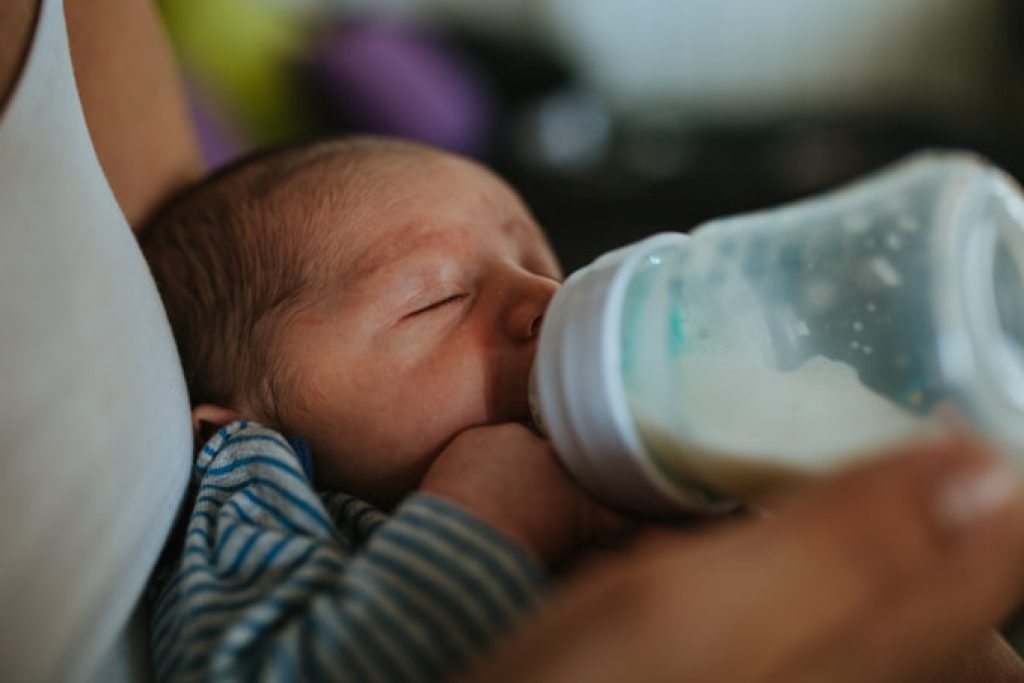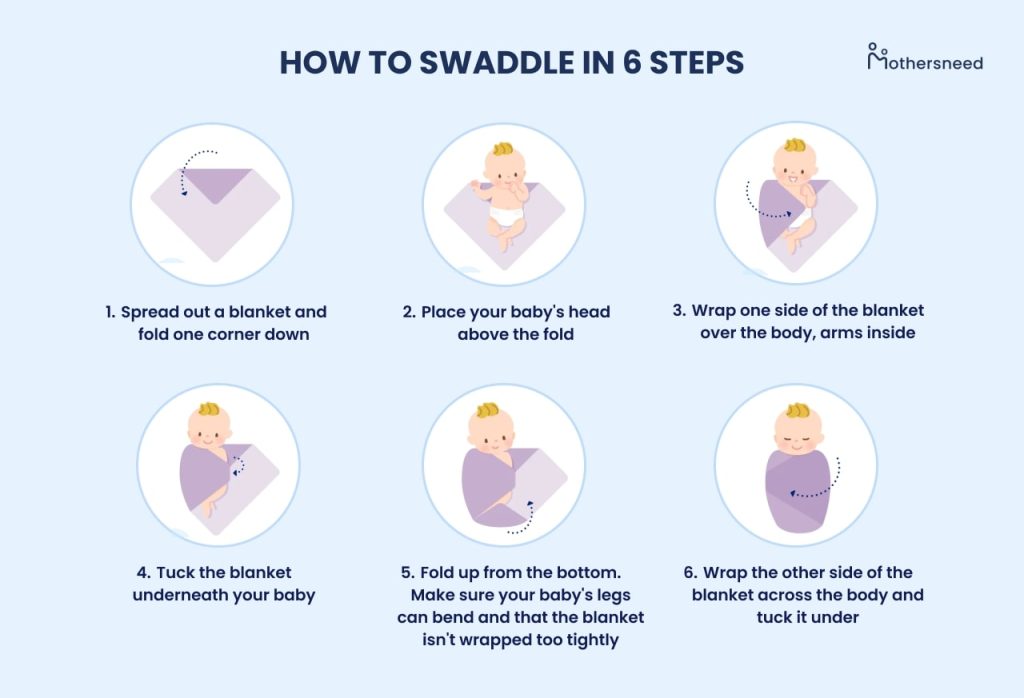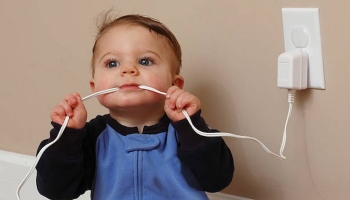
Swaddling is a common practice many parents use to help soothe their newborns. It involves wrapping a baby snugly in a blanket, mimicking the feeling of being in the womb. While swaddling can be an excellent tool for helping babies sleep, some parents wonder, “should I keep baby swaddled during night feedings”?
Night feedings are an essential part of a newborn’s growth and development. It’s recommended that parents feed their baby every 2-3 hours throughout the night to help them gain weight and stay healthy. However, unswaddling and re-swaddling a baby during these feedings can disrupt their sleep, making some parents wonder if it’s necessary or beneficial to unswaddle younger babies.
Key Takeaways
- Swaddling can be a helpful tool for soothing newborns to sleep.
- Night feedings are important for a baby’s growth and development.
- Deciding whether or not to keep a baby swaddled during night feedings depends on individual circumstances and preferences.
Understanding Swaddling

Swaddling is the practice of wrapping a baby in a blanket or cloth to simulate the feeling of being in the womb. It is believed to help soothe the baby and promote better sleep. However, it is essential to understand the proper technique and safety guidelines for swaddling.
The American Academy of Pediatrics (AAP) recommends that swaddling be done only for infants up to 2 months or until they roll over. After that, it can increase the risk of Sudden Infant Death Syndrome (SIDS) or hip dysplasia.
When swaddling, essential light and breathable fabric is necessary to prevent overheating. The swaddle should be snug but not too tight to allow for proper breathing and movement of the legs. It is also essential to ensure that the swaddle does not cover the baby’s face or head, as this can increase the risk of suffocation.
Parents should also avoid using loose blankets or other items in the crib, as they can increase the risk of SIDS. Instead, consider using a sleep sack or wearable blanket to keep the baby warm and secure.
Overall, swaddling can be a helpful technique to help a baby sleep. However, following safe swaddling techniques and guidelines is important to ensure the baby’s safety and well-being.
Swaddling Appeal: Does Every Baby Love It
Most parents love that swaddling their baby makes them feel calm and sleepy. Swaddling helps newborns have longer stretches of sleep. A newborn swaddled for 12 to 20 hours a day is perfectly fine. It mirrors the feeling of being in the womb. It helps them relax and have a restful sleep. You should monitor your baby to ensure they don’t roll over; don’t swaddle them if they start to show signs of rolling over. Don’t use thick blankets because they can cause heat. Don’t swaddle a fussy baby or wrap their legs.
Should You Unswaddle Baby For Night Feedings
As helpful as it is for babies to be swaddled, it is also essential to unswaddle your baby during night feedings. Babies use their whole bodies and especially their hands and arms to help with position and latch, says Allison Walsh, an International Board Certified Lactation Consultant in New York City. She adds, “I always tell parents how smart their baby is when they find their hands before feeding. They are organizing themselves for a good feed”. Another reason to keep your baby unswaddled for night feeds is that babies use their hands to help you recognize hunger cues, as newborns usually lick or tightly close their fists when hungry. Your baby using their hands also allows them to locate the nipple, compress the breast, and encourage milk letdown; it also applies to bottle feed. A swaddled baby is possibly sleepy; with their arms and legs free, they can concentrate on feeding.
Importance of Night Feedings

Night feedings are an essential part of a baby’s growth and development. Babies require frequent feedings, especially during the first few months of life, to ensure adequate nutrition for healthy growth and development.
Newborns have small stomachs and must be fed every two to three hours, including at night. Night feedings give babies the necessary nutrients to support their growth and development. In addition, night feedings can help establish and maintain a mother’s milk supply, especially during the early weeks of breastfeeding.
Breastfeeding mothers should nurse their babies on demand, day and night. Night feedings can help stimulate milk letdown and ensure the baby receives enough milk to satisfy their hunger. Mothers must ensure that their baby latches appropriately to the breast for adequate milk transfer.
For bottle-feeding mothers, nighttime feedings can be an opportunity to bond with their babies and provide them with the necessary nutrients. Ensuring the baby is properly latched onto the bottle is essential to ensure adequate milk transfer.
Some parents may incorporate a dream feed, a feeding given to a sleeping baby before the baby wakes and the parents go to bed. This can help extend the baby’s sleep cycle and provide them with the necessary nutrition during the night.
Night feedings are also important for babies going through a growth spurt or experiencing a developmental leap. These periods can cause most babies to be hungrier than usual and require more frequent feedings, including during the night.
How Long Should I Keep My Baby Upright After Feeding At Night
Keeping the baby upright after feeding reduces the risk of spit-up, reflux, and gastroesophageal reflux disease. It is normal for babies to spit up sometimes. Babies under three months should be kept upright for 15 to 20 minutes after feeding. It is important to keep the baby’s head up. This time allows their stomach to settle. Their stomachs become less sensitive, and their digestive tracts become more mature as they age. Between 3 to 4 months, infants should be kept for 10 to 15 minutes after feeding. Some babies are susceptible and tend to have more frequent reflux and spit up. These babies should be kept upright for longer periods. In cases where your baby falls asleep after feeding, you should keep it upright by placing it on your shoulders and burping it. You also keep the baby’s head and upper body elevated for a burp.
How Often Will Your Baby Wake Up For Nighttime Feeds
How often your baby will wake for feedings at night depends on how old they are, the feeding methods the parents use, and feeding habits. Newborns from 0 to 8 weeks have smaller stomachs and tend to eat every 2 to 3 hours around the clock. The older they get, they tend to spend several hours between feedings. Babies from 9 to 16 weeks tend to eat every 3 to 4 hours, twice on average at night. During 16 to 24 weeks, babies learn to sleep for more extended periods; they may wake once or not at all. Babies develop differently, so some may continue to wake several times to eat. At six months and above, many babies sleep through the night. They may wake up sometimes due to discomfort or other factors. Individual sleep patterns are essential because every baby is different. Nighttime feedings can be more frequent if breastfeeding because breast milk digests faster than formula.
Baby’s Sleep and Swaddling

Swaddling is a common practice that parents use to help their babies sleep better. When babies are swaddled, they are wrapped snugly in a blanket, which can help prevent them from startling themselves awake and provide a sense of security and deep sleep. However, some parents wonder if they should keep their baby swaddled during night feedings, or if they should unwrap them.
It is generally recommended that parents keep their baby swaddled during night feedings, as it can help the baby stay calm and relaxed. However, ensuring the baby is not overheated is essential, as this can be dangerous. If the baby is swaddled, parents should check to ensure that the baby’s face is not covered and that they are not too warm.
During the day, allowing the baby to sleep without being swaddled may be helpful, as this can enable them to move around and explore their environment. However, swaddling can be a valuable tool to help them feel more secure and calm at bedtime or if the baby is having trouble settling down for a nap.
As babies grow and develop, they may roll over, making swaddling unsafe. Parents should stop swaddling their baby once they start to show signs of rolling over, as this can increase the risk of suffocation. It is also essential to ensure the baby is burped before they fall asleep, as this can help prevent gas and discomfort.
Regarding dream feeding, some parents choose to keep their babies swaddled, while others prefer to unwrap them. Ultimately, the decision will depend on the baby’s needs and preferences.
Paying attention to the baby’s cues and signs of being overstimulated or overheated is essential, as this can interfere with their ability to get the rest they need. If the baby is overstimulated, such as flailing their arms and legs, it may be time to stop swaddling and try other soothing techniques.
Overall, swaddling can be a helpful tool for promoting better sleep in babies. However, it is important to use it safely and appropriately and pay attention to the baby’s needs and preferences.
How To Swaddle Your Baby

Swaddling is a technique that involves wrapping a baby snugly in a blanket to help them feel secure and calm. However, it is essential to use proper swaddling methods to ensure the infant’s safety. Here are some tips on how to swaddle a baby correctly:
- Choose the suitable material: Use a lightweight, breathable fabric such as cotton to swaddle your baby. Avoid using polyester or other synthetic materials that can cause overheating.
- Start with a square blanket: Begin by laying the blanket on a flat surface in a diamond shape. Fold the top corner down to create a straight edge.
- Place the baby on the blanket: Lay the baby on their back with their head above the folded edge.
- Secure the arms: Take one corner of the blanket and wrap it snugly over the baby’s arm and chest. Tuck the edge of the blanket under the baby’s back. Repeat on the other side.
- Secure the diaper: Make sure the diaper is snugly fastened before wrapping the blanket around the baby.
- Wrap the blanket: Take the bottom corner and fold it over the baby’s feet. Tuck the edge of the blanket under the baby’s back to secure it in place.
It is important to note that swaddling should only be done for newborns and infants up to two months old. After that, it is recommended to gradually unswaddle the baby to allow them to move their arms and legs freely. The American Academy of Pediatrics also advises against using loose blankets or swaddling too tightly, as it can cause suffocation or hip problems such as hip dysplasia.
When to Unswaddle During Night Feedings
Unswaddling newborn sleep during night feedings can be a tricky decision for parents. While swaddling helps newborn babies feel secure and comfortable, unswaddling can help them stay awake during feedings and learn to self-soothe.
If the baby is breastfeeding, it is generally recommended to unswaddle them during night feedings. This allows the baby to have better access to the breast and ensures they can latch properly. It also helps the baby stay awake during the feeding, which can be particularly helpful for many babies struggling to gain weight or have difficulty latching.
If the baby is bottle-fed, unswaddling may not be necessary as the baby can quickly drink from the bottle while swaddled. However, suppose the baby is showing signs of reflux. In that case, it can help unswaddle and keep the baby upright after feeding, reducing reflux symptoms and avoiding gastroesophageal reflux disease.
Before unswaddling, it is essential to ensure that the baby’s diaper is changed and they have been burped to prevent discomfort during the feeding. It is also necessary to watch for hunger cues and feed the baby before it becomes too hungry, as this can make latching more difficult.
If the baby is having difficulty latching or seems fussy during the feeding, it may be helpful to take a few minutes to relax and rock the baby before attempting to feed again. If the baby struggles with latching or feeding, it is important to consult a doctor or pediatrician to rule out any underlying issues.
Conclusion
In conclusion, whether or not to keep a baby swaddled during night feedings depends on individual preferences and circumstances. Swaddling can help calm a fussy baby and promote better sleep, but it can also pose safety risks if not done correctly.
Parents should consider their baby’s age, developmental stage, and any medical conditions or concerns before deciding whether to swaddle during nighttime feeding. It’s also essential to ensure the swaddle is snug but not too tight and the baby is placed on their back to sleep.
Overall, the decision to swaddle during night feedings should be made on a case-by-case basis, considering the unique needs and preferences of both the baby and the parents. It’s always a good idea to consult with a pediatrician or other healthcare provider for guidance and advice.
In discussions with family and friends, it can be helpful to share information and experiences, but ultimately, the decision should be based on what works best for the individual family. Keeping up with the latest news and research on swaddling and infant care can also be valuable for parents and caregivers.
Whether expecting a new arrival or caring for a toddler, staying informed and making informed decisions about parenting and childcare practice is important. From diapers to feeding, even to sleep patterns, there are many factors to consider, and every family’s journey is unique.
Frequently Asked Questions
How can I make night time bottle feeding easier?
Night time bottle feeding can be made easier by preparing everything in advance. Make sure you have a clean bottle and formula ready before you start feeding. Keep the lights dim and avoid stimulating your baby too much. You can also try using a bottle warmer to quickly heat up the formula.
When can I stop night feeding my baby?
The American Academy of Pediatrics recommends that babies continue to be fed on demand until they are at least 6 months old. However, if your baby is consistently sleeping through the night and gaining weight appropriately, you may be able to gradually reduce the number of night feedings. It’s important to talk to your pediatrician before making any changes to your baby’s feeding schedule.
Is it ok to keep baby swaddled while feeding?
Yes, it’s generally okay to feed a swaddled baby, especially if it helps keep them calm and focused during feeds. However, for some babies, having their arms free during feeding can make the process easier and help them to latch better. Be attentive to your baby’s cues to determine what works best for them.
Can a newborn sleep without being swaddled?
Yes, a newborn can sleep without being swaddled. While many babies feel comforted and secure when swaddled, it’s not a necessity if your baby seems content sleeping without it. Be sure to place the baby on their back to sleep and avoid loose bedding or toys in the crib to maintain a safe sleep environment.
Can you feed and burp baby while swaddled?
Feeding while swaddled can be done, especially if the baby is calm and comfortable. However, for burping, it’s often easier when the baby is unswaddled. This allows the baby to move more freely and makes it easier for parents to hold the baby in positions that facilitate burping.
How long should newborn night feeds take?
The duration of nighttime feeds can vary for each baby, but typically, a feeding session can last anywhere from 20 to 40 minutes. It includes the time to feed, burp, and soothe the baby back to sleep. It’s essential to be patient and responsive to your baby’s needs during these feeds.








